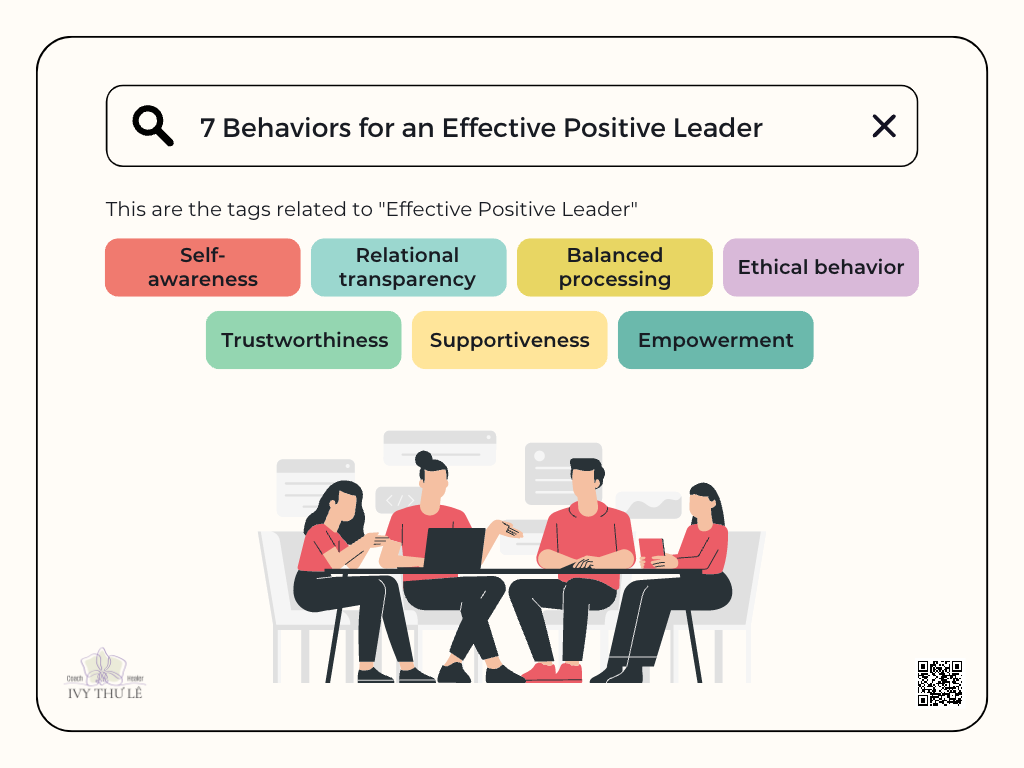How to Build a Positive Workplace (Part 4) - Positive Leadership Style
In this last article of the series, it would be about leadership and how to approach in a positive, effective and impactful ways.
If you are a leader in any sense of the word, you know that it’s a difficult job. Leadership is about much more than giving orders, managing employees’ time and making schedules, or providing annual performance reviews; it’s a task that requires dedication and a wide range of skills.
What is Positive Leadership?
Positive leadership is a catch-all term, an umbrella under several leadership theories but Kim Cameron who you might even call him a “founding father” of positive leadership has proven to be a significant source of knowledge about positive leadership[1].
In his description, there are three connotations of positive leadership:
It facilitates positively deviant (extraordinarily positive) performance.
It features an affirmative bias, meaning that it is oriented towards the positive (strengths instead of weaknesses).
It fosters the good in people (e.g., virtuousness, moral integrity).
Six Examples of Positive Leadership in Action
It’s easy to say (and believe) that implementing the principles of positive psychology into leadership is a good idea, but it can be difficult to know how to actually implement it.
So what does positive leadership look like in action? Here are six examples[2]:
A leader who cares will respond to a rare mistake from their most productive employee with concern and compassion rather than condemnation.
A leader who cares will understand that we are all human and each and every one of us will make a mistake at some point.
An effective positive leader will also understand that there is probably a reason behind the mistake, and this leader will talk to the employee to see if he or she is struggling with something that’s not immediately obvious.
A leader who empowers his employees is one who gives them as much power and self-determination as possible. A good positive leader does not give orders or answers but provides the guidance and resources necessary for his employees to do their best work.
An empowering leader might delegate projects and large-scale tasks to staff, but allow them to choose how they will go about tackling them. He may also encourage them to choose their own training and development opportunities to ensure they are invested in their own growth.
A positive leader supports her employees. This entails more than just seeming supportive; being a truly supportive leader requires acting as a backup for your employees and being there for them when they need it the most. This might look like acting as a buffer between his employees and a micromanaging middle manager, or it may manifest as speaking up for an employee in a meeting when he or she is struggling.
Seven Behaviors a Leader Needs to be Effective
To be an effective positive leader, there are seven behaviors that you may want to incorporate into your toolbox[2]:
Self-awareness (asking for feedback);
Relational transparency (having a clear leadership philosophy);
Balanced processing (using active listening);
Ethical behavior (following through on what you say you will do);
Trustworthiness (treating others with respect and keeping your word);
Supportiveness (giving appreciation and support to followers);
Empowerment (giving your followers freedom and choice);
Implement these seven positive behaviors in your day-to-day leadership and you will see a marked improvement in follower performance, organizational climate, and morale.
Last but not least, leading others can get messy and complicated, but it’s a vital role—and a vital role to get right. As said by Vince Lombardi:
“Leaders are made, they are not born. They are made by hard effort, which is the price which all of us must pay to achieve any goal that is worthwhile.”
and the person can do it, it’s just you - an effective positive leader.
In summary, four articles of the series of How to Build a Positive Workplace have been gone through what an effective team is in term of psychology of teamwork, how we use team coaching as a strategic way to increase the effectiveness, how positive social relationships at workplace can maximize engagement levels among employees and lastly about effective positive leadership as a solid foundation for sustainable growth of organizations.
Thank you for your following and may your business flourish!
Here are the published articles of the series "How to Build a Positive Workplace":
Effective Teams, Seven Components of a Highly Effective Team
Team Coaching, a Strategic Way to Increase the Effectiveness
Build Stronger Relationships, Positive Interactions in Workplace
Reference:
[1] Cameron, K. S. (2008). Positive leadership. San Francisco, CA: Berrett-Koehler Publishers, Inc.
[2] The studies about positive leadership, by Courtney E. Ackerman, MA in Positive Organizational Psychology - Researcher and evaluator of mental health programs for the state of California, US.
Thư Lê (Ivy)
Positive Psychology, APA Certified | ICF 70-hour ACSTH Certified Coach | Career Coach, Life Coach & Healing - Ho Chi Minh City, Vietnam - ivythule.substack.com
If you’re looking for a partner who could go along and help sailing journey as a lighthouse, please do not hesitate to reach me.





